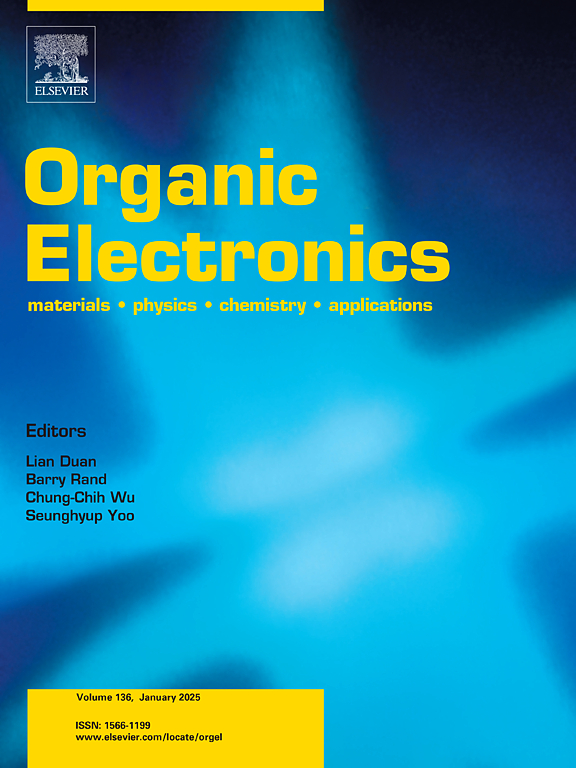小分子给体-聚合物受体有机光伏电池的研究进展
IF 2.6
4区 工程技术
Q3 MATERIALS SCIENCE, MULTIDISCIPLINARY
引用次数: 0
摘要
有机太阳能电池(OSCs)具有轻量化、柔韧性、大面积制造的溶液可加工性和低成本等特点,与硅基光伏电池相比具有显著的互补优势,使其成为清洁能源领域的前沿研究领域。在新兴的结构中,基于小分子供体/聚合物受体(SDPA)的OSCs由于其独特的活性层稳定性,特别是在高温条件下(>85°C)保持优化相分离形态的能力而引起了相当大的关注,为克服有机光伏产业化的稳定性瓶颈提供了潜力。然而,目前记录的SDPA-OSCs的功率转换效率(PCE)保持在12.1%,明显落后于主流的体异质结系统(PCE > 20%)。为了提高SDPA-OSCs的效率,人们在优化材料、器件工程和加工技术方面做出了广泛的努力。本文从器件结构和有源层处理的角度系统地总结了SDPA-OSCs的最新进展。重点领域包括器件结构工程(传统与反向配置)和有源层制造策略(体异质结溶液涂层和逐层沉积技术)对载流子传输和器件性能的影响。通过建立稳健的“材料结构-形态-器件性能”相关性,这项工作为开发高效的sdpa - osc提供了关键的见解和技术参考。展望了未来材料创新、形貌控制和可扩展制造等方面的研究方向和挑战,以指导基于sdpa的有机光伏技术的发展。本文章由计算机程序翻译,如有差异,请以英文原文为准。

Research progress in small-molecule donor-polymer acceptor organic photovoltaic cells
Organic solar cells (OSCs), characterized by their lightweight, flexibility, solution-processability for large-area fabrication, and low cost, exhibit significant complementary advantages to silicon-based photovoltaics, positioning them as a cutting-edge research frontier in clean energy. Among emerging architectures, small-molecule donor/polymer acceptor (SDPA)-based OSCs have attracted considerable attention due to their unique active layer stability, particularly their ability to maintain optimized phase-separated morphology under high-temperature conditions (>85 °C), offering potential to overcome the stability bottleneck in organic photovoltaic industrialization. However, the current record power conversion efficiency (PCE) of SDPA-OSCs remains at 12.1 %, significantly lagging behind mainstream bulk heterojunction systems (PCE >20 %). To advance the efficiency of SDPA-OSCs, extensive efforts have been devoted to optimizing materials, device engineering, and processing techniques. This review systematically summarizes recent progress in SDPA-OSCs from the perspectives of device architecture and active layer processing. Key focus areas include the impact of device structure engineering (conventional vs. inverted configurations) and active layer fabrication strategies (bulk heterojunction solution-coating and layer-by-layer deposition techniques) on charge carrier transport and device performance. By establishing robust "material structure–morphology–device performance" correlations, this work provides critical insights and technical references for developing high-efficiency SDPA-OSCs. Furthermore, future research directions and challenges in material innovation, morphology control, and scalable manufacturing are discussed to guide the advancement of SDPA-based organic photovoltaics.
求助全文
通过发布文献求助,成功后即可免费获取论文全文。
去求助
来源期刊

Organic Electronics
工程技术-材料科学:综合
CiteScore
6.60
自引率
6.20%
发文量
238
审稿时长
44 days
期刊介绍:
Organic Electronics is a journal whose primary interdisciplinary focus is on materials and phenomena related to organic devices such as light emitting diodes, thin film transistors, photovoltaic cells, sensors, memories, etc.
Papers suitable for publication in this journal cover such topics as photoconductive and electronic properties of organic materials, thin film structures and characterization in the context of organic devices, charge and exciton transport, organic electronic and optoelectronic devices.
 求助内容:
求助内容: 应助结果提醒方式:
应助结果提醒方式:


